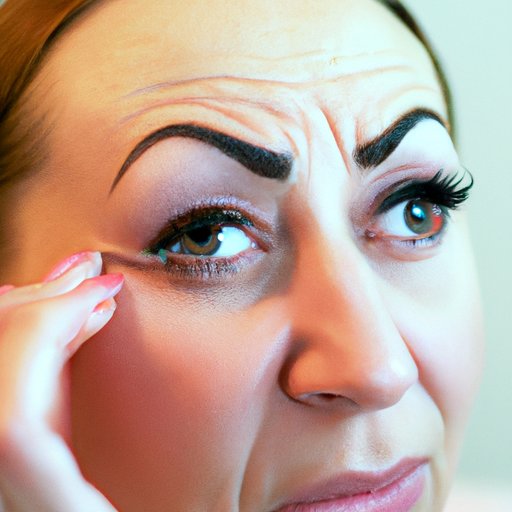
I. Introduction
An eye stye is a common condition that occurs when bacteria infect the oil glands in your eyelid. This leads to the formation of a small, red, painful bump on the eyelid. While generally not serious, an eye stye can be uncomfortable and unsightly. In this article, we’ll cover everything you need to know about treating an eye stye, including its symptoms, causes, prevention, treatment at home, professional medical help, preventing the spread of infection, and coping with the condition.
II. Symptoms and Causes
The most common symptoms of an eye stye include redness, pain, swelling, and tenderness in the affected area. You may also experience a feeling of pressure or discomfort in the eye. The most common causes of an eye stye are poor hygiene, a weakened immune system, and using old or contaminated eye makeup or contact lenses.
III. Prevention
Preventing an eye stye is simple. By maintaining good hygiene habits and taking care of your eyes, you can minimize your risk of developing this condition. Make sure to wash your hands frequently and avoid touching your eyes with dirty hands. Additionally, avoid sharing makeup or contact lenses with others, as this can lead to infections. Finally, make sure to get enough rest and eat a balanced diet to keep your immune system strong.
IV. Treatment at Home
If you develop an eye stye, don’t worry – there are several things you can do to treat it at home. First, apply a warm compress to the affected area for 10-15 minutes at a time several times a day. This will help reduce swelling and pain. You can also take over-the-counter pain relievers like acetaminophen or ibuprofen to ease discomfort. Be sure to maintain good hygiene habits throughout the healing process by washing your hands thoroughly and avoiding touching your eye.
Finally, there are a few other things you can do to speed up the healing process. Applying tea tree oil or using special eye drops can help reduce inflammation and clear up the infection. However, be sure to talk to your doctor before using any new treatments to ensure they’re safe and effective.
V. Professional Medical Help
In most cases, an eye stye will clear up on its own within a week or so. However, if you experience severe or persistent symptoms, it’s important to seek professional medical help. Your doctor may prescribe a topical antibiotic to help clear up the infection, or they may recommend a minor surgical procedure to drain the bump and remove any infected tissue.
VI. Preventing the Spread of Infection
If you have an eye stye, it’s important to take steps to prevent the infection from spreading to others. Avoid sharing towels, makeup, or other personal items with others, and wash your hands frequently. Additionally, avoid touching your eyes with dirty hands or rubbing them excessively, as this can spread the infection.
VII. Coping with the Condition
If you’re dealing with an eye stye, there are a few things you can do to help alleviate the pain and discomfort. Applying a warm compress can help reduce swelling and ease pain, while over-the-counter pain relievers can help provide relief. Additionally, you can try using a saline solution to flush out your eyes and keep them clean, or using a cold compress to numb the area and reduce inflammation.
VIII. Conclusion
An eye stye may be an uncomfortable and unsightly condition, but it’s easily treatable with proper care and attention. By following the tips in this article, you can help prevent eye styes from occurring and treat them quickly and effectively if they do develop. Remember to practice good hygiene habits, maintain a healthy lifestyle, and seek professional medical help if needed, and you’ll be well on your way to symptom relief and recovery.




